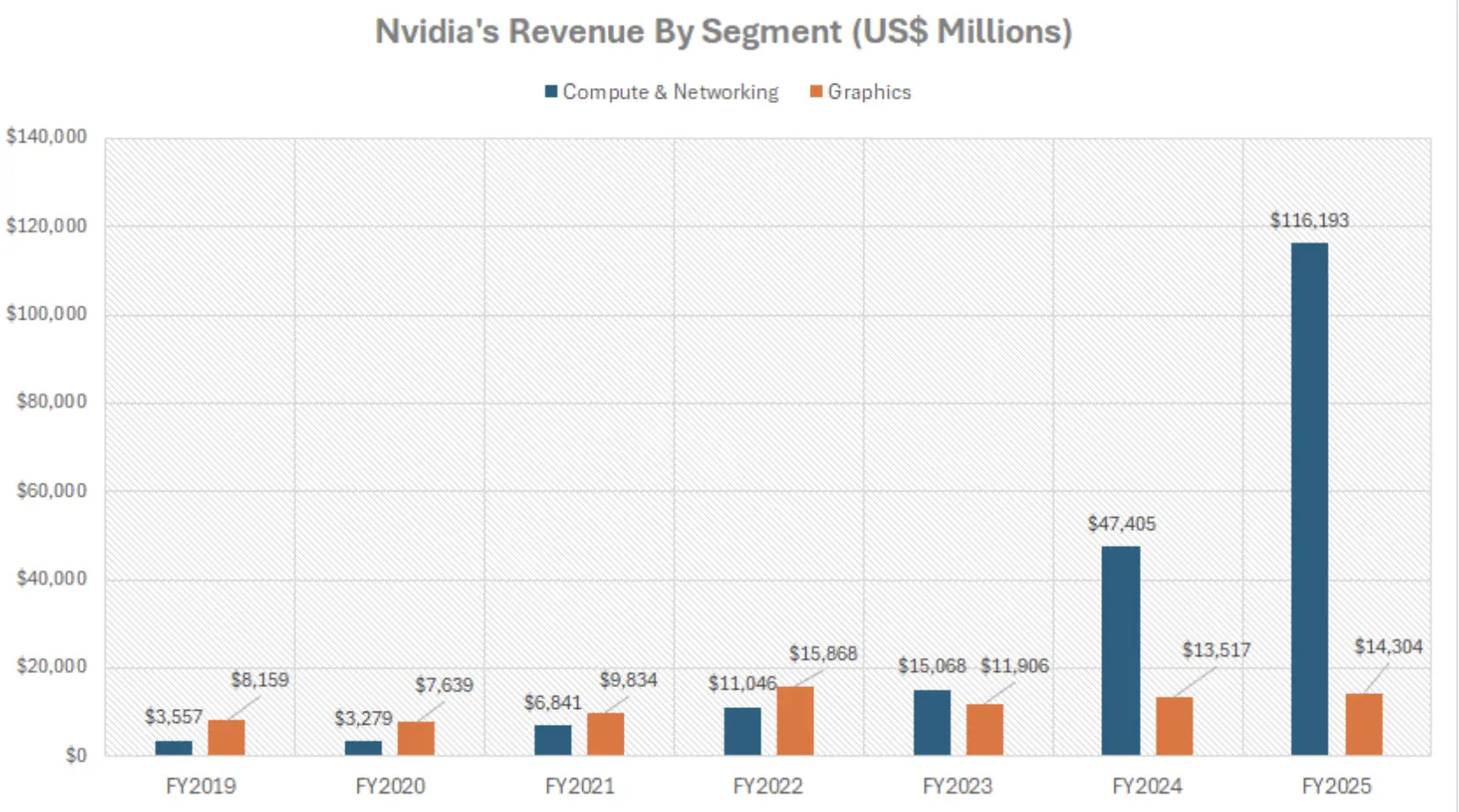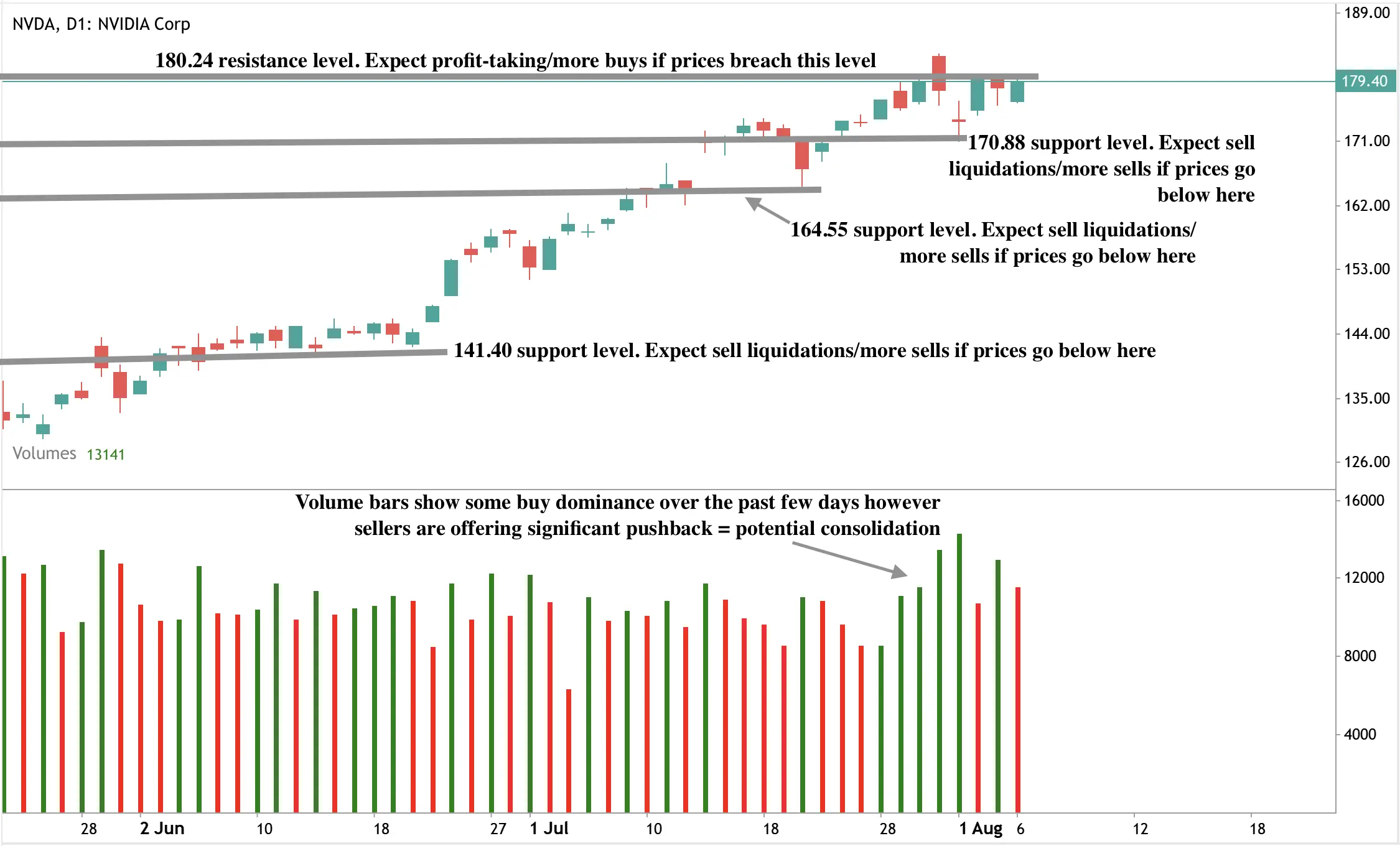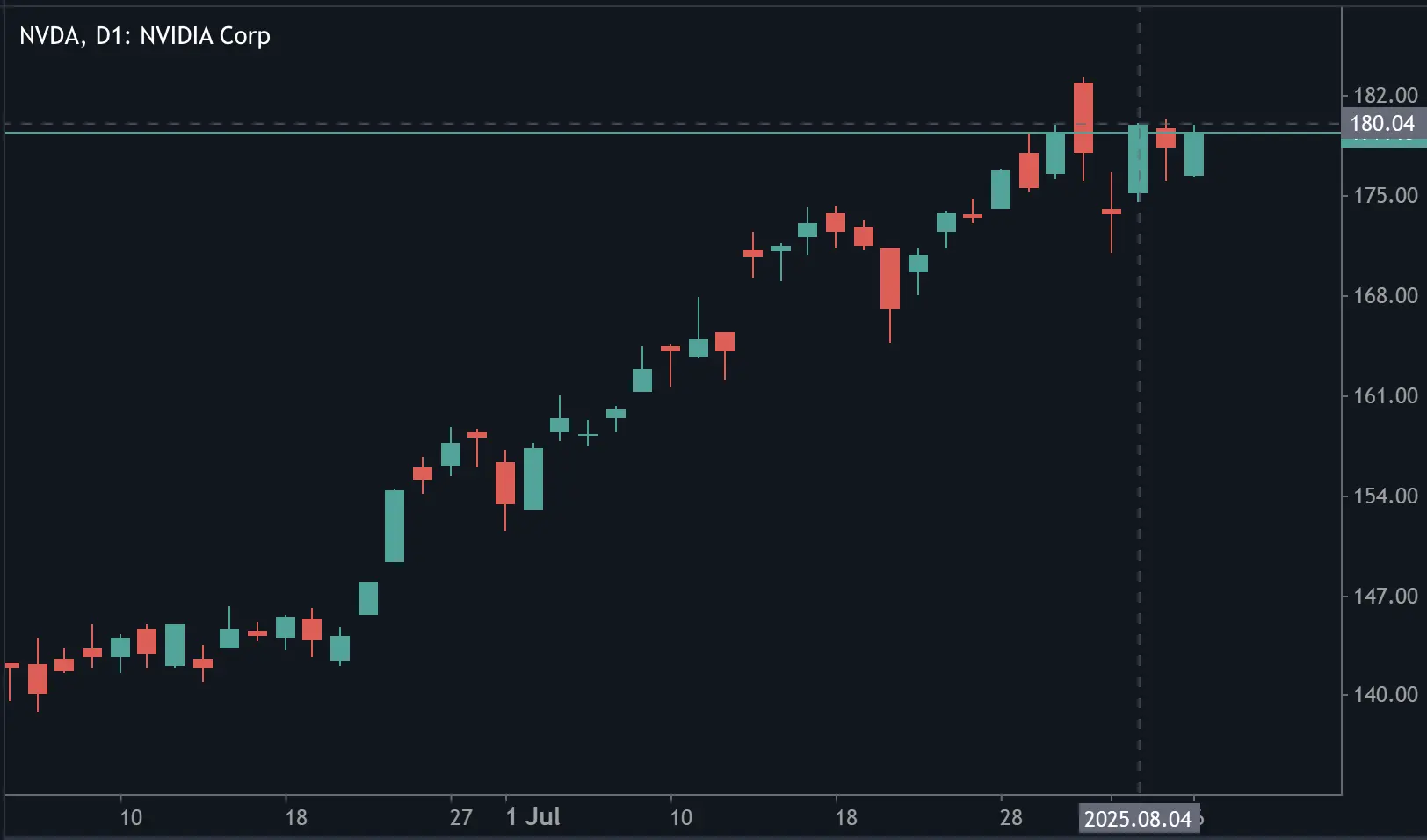Trump’s 100% semiconductor tariff could trigger a $500B Nvidia tailwind

U.S. trade policy is once again the centre of market focus as President Trump prepares to implement a 100 percent tariff on imported semiconductors. According to reports, while the move has sparked concern across Asia’s semiconductor supply chains, investors are already rotating into one key beneficiary - Nvidia. The AI chipmaker’s $500 billion U.S. manufacturing pledge, announced earlier this year, could not only exempt it from the coming import tax but also accelerate its transition from global supplier to domestic infrastructure leader.
Key takeaways
- Trump’s planned 100% tariff on imported semiconductors could reshape global chip flows, but firms like Nvidia with U.S. fab investments are likely to be exempt.
- Nvidia has committed up to $500 billion toward domestic AI infrastructure, a move that aligns with trade policy and could support a longer-term stock rally.
- Analysts say Nvidia’s networking segment - often overlooked - is critical to AI scale and increasingly central to its bullish thesis.
Nvidia’s US manufacturing may become its moat
Data showed that with Nvidia’s stock already up over 59% in the past three months, traders are now reassessing the impact of geopolitics on AI infrastructure. The semiconductor tariff, initially seen as a threat, is increasingly being reframed as a policy tailwind for companies that localise production. In Nvidia’s case, the combination of CHIPS Act incentives, networking dominance, and strategic White House proximity may further insulate it from near-term risks.
In April 2025, Nvidia pledged to invest up to $500 billion in U.S.-based chip manufacturing and AI infrastructure, including partnerships with TSMC, Foxconn, and American-based server suppliers. This move now appears not just strategic, but prescient. With Trump favouring companies that “build in America”, Nvidia’s early pivot may qualify it for tariff exemptions.
According to administration sources, exemptions are expected for firms actively building capacity within U.S. borders. This would give Nvidia - already flush with CHIPS Act funding - an edge over peers more exposed to Asian supply chains. AMD, for instance, continues to rely heavily on Taiwan’s TSMC and is still scaling up its Arizona-based production. Intel and Broadcom are also expected to benefit, but Nvidia’s dominant role in the AI GPU market makes it a standout.
Nvidia networking is the hidden growth engine
Beyond chips, Nvidia’s lesser-known networking business is driving increasing revenue. In fiscal 2025, the segment contributed $12.9 billion, more than the company’s entire gaming revenue.

Its NVLink, InfiniBand, and Ethernet systems allow massive AI clusters to function efficiently - a critical feature as AI workloads shift toward inferencing and real-time processing.
This infrastructure edge is growing more important as tech giants like Microsoft and Amazon seek to deploy large-scale AI systems. Nvidia’s ability to offer tightly integrated GPU–DPU–networking packages positions it as the full-stack provider of choice - and further justifies its valuation premium.
Nvidia technical outlook
At the time of writing, Nvidia’s price is seeing a significant uptick as tariff wars rage on. However, volume bars show that sellers are offering significant pushback to buyer dominance - hinting at a potential consolidation. Should we see a further uptick, prices could find resistance at the $180.24 level. Conversely, should we see a dip, prices could be held at the $170.88 and $164.55 support levels.

Market positioning and potential upside
As of 4 August, Nvidia traded near its 52-week high at $180 per share, having outperformed rivals like Broadcom, Marvell, and Qualcomm over the last quarter.

Despite geopolitical tensions and Chinese export restrictions, the company forecasts Q2 revenue of $45 billion - a 50% year-over-year jump.
Wall Street expects revenue to grow by 52% in fiscal 2026 and earnings by over 40%. While some caution remains around Nvidia’s elevated forward P/E of 36.3x, analysts argue that its policy alignment, scale, and demand tailwinds justify the valuation.
The policy risk narrative is shifting
Trump’s tariff push marks a pivot from incentive-led semiconductor policy under the Biden administration to a more punitive “build here or pay up” model. While critics warn this could disrupt global supply chains and stoke inflation, investors appear to be pricing in exemptions and selective enforcement.
Semiconductor stocks initially wavered on the announcement but have since stabilised - with Nvidia leading the rebound. The belief that Trump’s policy will reward companies with a domestic footprint is fuelling speculative inflows, and Nvidia’s CEO Jensen Huang has already met with Trump twice in recent months, including just hours before the policy was floated publicly.
Frequently asked questions
Why is Nvidia seen as a beneficiary of Trump’s tariffs?
Because it has committed to large-scale U.S. production and is likely to receive policy exemptions.
Is the $500 billion investment confirmed?
Nvidia’s announced pledge includes spending on chip fabs, AI servers, and infrastructure over four years, with public–private funding support via the CHIPS Act.
What role does networking play in Nvidia’s business?
Networking technologies like NVLink and InfiniBand allow AI chips to function efficiently at scale. It’s a $12B+ business and a key part of Nvidia’s AI stack.
Are other firms affected by the tariff?
Yes. Countries like the Philippines and Malaysia have raised concerns, while firms without a U.S. manufacturing base may face cost pressures.
Investment implications
If Trump formalises the 100 percent tariff and carves out exemptions for companies with U.S. manufacturing, Nvidia could be uniquely positioned for further upside. Its combination of AI leadership, domestic alignment, and infrastructure scale provides a strong case for institutional inflows - especially if inflation and geopolitical pressures persist.
In a policy environment that now punishes global exposure and rewards national alignment, Nvidia may not just survive the tariff era - it could dominate it.
Trade on the next movements of Nvidia with a Deriv MT5 account today.
Disclaimer:
The performance figures quoted are not a guarantee of future performance.



